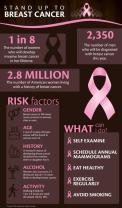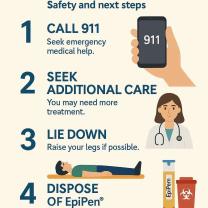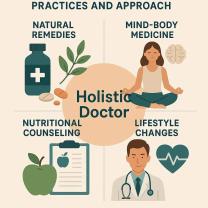What are traditional voice therapy exercises?
Traditional voice therapy exercises are a set of techniques and activities used by speech-language pathologists (SLPs) and voice coaches to address various voice disorders and improve vocal health and quality. These exercises are designed to target specific vocal issues and enhance overall vocal function. Here are some common traditional voice therapy exercises:
Vocal Hygiene Practices:
- Education on proper vocal hygiene, which includes staying hydrated, avoiding irritants (like smoking or excessive caffeine), and resting the voice when needed.
Respiration Exercises:
- Diaphragmatic breathing exercises to promote efficient breath control, supporting healthy vocal production.
Pitch Control Exercises:
- Exercises to help individuals achieve optimal pitch control, especially if they have pitch-related voice disorders.
Resonance and Voice Projection:
- Exercises to improve resonance and projection, including techniques to focus sound in the oral or nasal cavity, as needed.
Voice Range and Flexibility:
- Exercises to expand vocal range and flexibility, which may include vocal warm-up routines and scales.
Voice Volume Control:
- Exercises to regulate voice volume, particularly for individuals who tend to speak too loudly or too softly.
Phonation Exercises:
- Activities to work on phonation or sound production, addressing issues such as breathy, strained, or irregular voice quality.
Articulation Exercises:
- Exercises to improve articulation and clarity of speech sounds, especially when speech disorders are present.
Pitch Inflection and Prosody:
- Exercises to enhance pitch inflection and prosody (intonation patterns) in speech, promoting natural and expressive speech.
Vocal Fold Strengthening:
- Exercises to strengthen the vocal fold muscles for improved vocal power and endurance.
Eliminating Vocal Abuse Habits:
- Identifying and addressing habits that may contribute to vocal abuse, such as throat clearing or yelling.
Resonance Voice Therapy:
- Techniques to adjust vocal resonance for individuals with resonance disorders, like hypernasality or hyponasality.
Semi-Occluded Vocal Tract Exercises (SOVT):
- Using tools like straws or lip trills to facilitate vocal tract semi-occlusion, which can improve vocal function.
Vocal Relaxation and Muscle Release:
- Exercises to release tension in the neck and laryngeal muscles, promoting a relaxed vocal mechanism.
Pitch Glides and Slides:
- Exercises that involve smoothly transitioning between different pitches or vocal registers.
Voice Monitoring and Self-Evaluation:
- Encouraging individuals to listen to and evaluate their own voice to become more aware of their vocal habits.
Feedback and Visualization:
- Utilizing technology like spectrograms or visual feedback to help individuals understand and modify their vocal production.
It's important to note that the specific exercises used in voice therapy are tailored to the individual's needs and the nature of their voice disorder. Voice therapy is often customized to address issues such as vocal nodules, vocal cord paralysis, muscle tension dysphonia, and many others. SLPs and voice coaches work closely with their clients to develop personalized treatment plans that may include a combination of these exercises, along with counseling and behavioral strategies. The goal of voice therapy is to improve vocal function, reduce strain, and enhance overall vocal health.
What are some traditional voice therapy exercises for improving vocal function?
There are many traditional voice therapy exercises that can be used to improve vocal function. Some common exercises include:
- Humming: Humming is a good way to warm up the vocal cords and improve resonance.
- Lip trills: Lip trills are a good way to strengthen the vocal cords and improve flexibility.
- Semi-occluded vocal tract exercises: Semi-occluded vocal tract exercises, such as straw phonation and lip pursing, are a good way to increase vocal fold closure and improve vocal efficiency.
- Vocal function exercises: Vocal function exercises, such as sustained phonation and glissandos, are a good way to improve vocal range and control.
How do vocal exercises help individuals with voice disorders or vocal challenges?
Voice exercises can help individuals with voice disorders or vocal challenges by:
- Strengthening the vocal cords: Voice exercises can help to strengthen the vocal cords, which can improve vocal function and reduce the risk of vocal injury.
- Improving vocal fold closure: Voice exercises can help to improve vocal fold closure, which can improve vocal efficiency and reduce vocal strain.
- Increasing vocal range and control: Voice exercises can help to increase vocal range and control, which can improve the ability to sing and speak clearly and effectively.
Are there specific voice therapy exercises for singers or public speakers to enhance performance?
Yes, there are specific voice therapy exercises that can be used by singers and public speakers to enhance their performance. Some common exercises include:
- Vocal warm-up exercises: Vocal warm-up exercises are important for singers and public speakers to prepare their voices for performance. These exercises can help to increase vocal range, flexibility, and endurance.
- Vocal projection exercises: Vocal projection exercises can help singers and public speakers to project their voices so that they can be heard clearly over a large audience.
- Resonance exercises: Resonance exercises can help singers and public speakers to improve the sound quality of their voices.
What is the role of voice professionals and speech therapists in conducting voice therapy exercises?
Voice professionals and speech therapists can play a vital role in conducting voice therapy exercises. They can:
- Assess an individual's vocal function and identify any areas of weakness: This information can be used to develop a personalized voice therapy program.
- Provide instruction on how to perform voice therapy exercises correctly: This is important to ensure that the individual gets the most benefit from the exercises and avoids any injury.
- Monitor the individual's progress and make adjustments to the voice therapy program as needed: This helps to ensure that the individual is making progress towards their goals.
How can individuals practice and maintain the benefits of voice therapy exercises at home?
Individuals can practice and maintain the benefits of voice therapy exercises at home by:
- Practicing regularly: Voice therapy exercises should be practiced regularly, at least once a day, for the most benefit.
- Listening to their voices: Individuals should pay attention to how their voices sound when they are practicing voice therapy exercises. This will help them to identify any areas where they need to make adjustments.
- Being patient: It takes time and practice to see the benefits of voice therapy exercises. Individuals should be patient and continue to practice regularly, even if they don't see results immediately.
If you have any concerns about your voice or would like to learn more about voice therapy exercises, please consult with a voice professional or speech therapist. They can help you to develop a personalized plan to improve your vocal function and achieve your voice goals.













